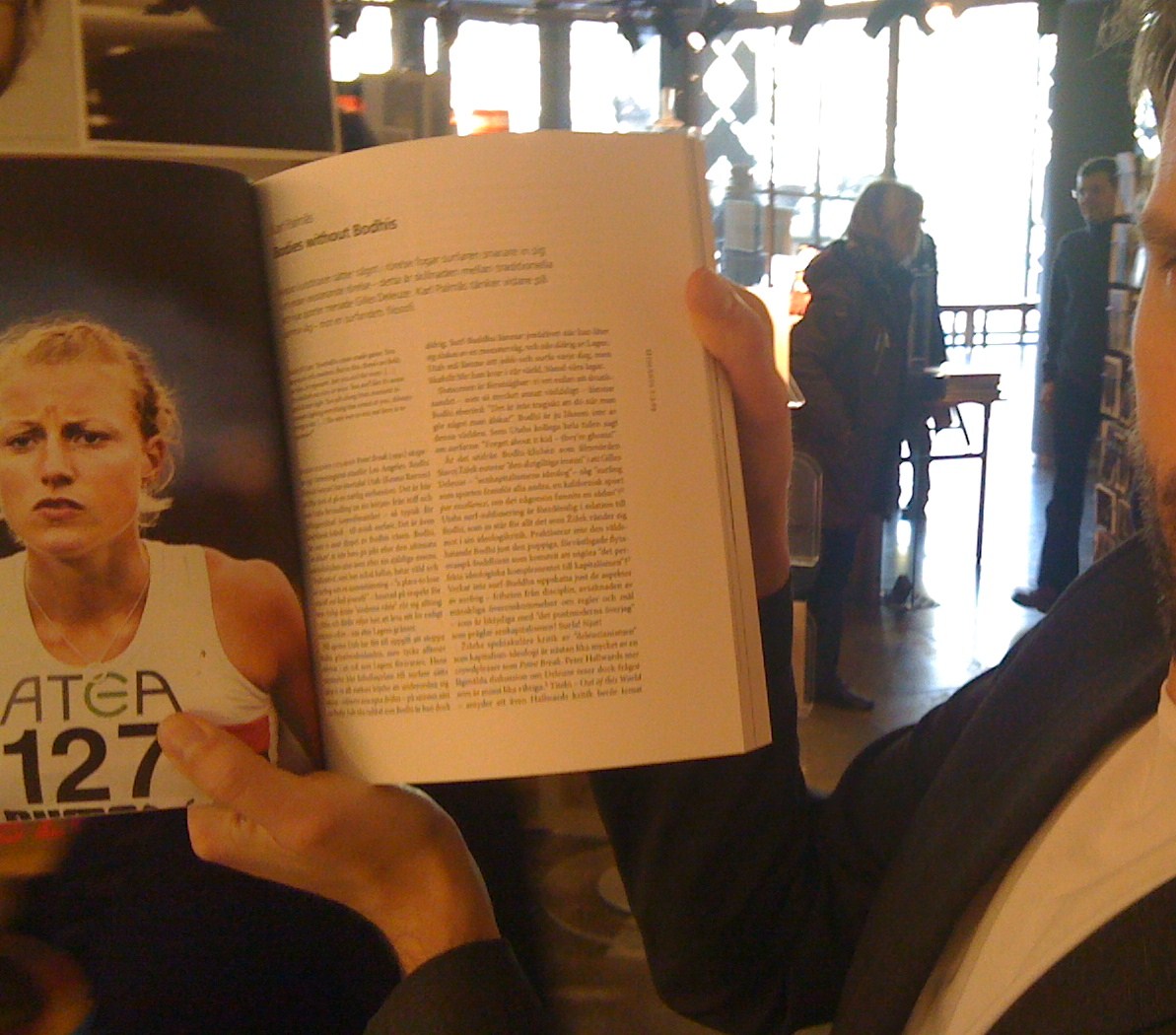Uppdatering om ett par texter som jag skrivit – denna gång om film.
1. ”Saker och ting”
I nya FLM försöker jag säga någonting intelligent om Ruben Östlunds arbete; främst Gitarrmongot, men även De Ofrivilliga. Ursprungligen var tanken att jag ville skriva något om ”naturkulturradikalismen”, såsom den fångats inom film-genren. Ville säga något om hur framväxten av ny samhällsteori, ”ontopolitik”, och ”naturkulturradikal” aktivism (typ The Pirate Bay), och exemplifiera i 00-tals-film. Gjorde flitig research, men kammade noll. Som jag skriver:
Dessa skiften märks inte i 00-talets svenska film-manus: Det är ont om icke-mänskliga rollfigurer, och datortänket har ännu inte hunnit smitta av sig i de mänskliga rollfigurernas sätt att tänka.
Jag valde då att göra Steven Johnson-greppet från Everything Bad is Good for You: Analysera popkulturella fenomen såsom tillblivelser i vissa ekologier, inte som direkta avtryck av regissörens intentioner att symbolisera/representera samtiden (som i auteur-teori, om jag förstått den rätt). Med andra ord, som jag skriver:
Skiftena märks däremot om man studerar hur teknologier och datortänk påverkar själva tillblivelsen av svensk 00-tals-film…
Vad skriver Johnson själv om saken? Jo, att hans ansats i nämna bok är
more systemic than symbolic, analyzing the forces that bring about a certain cultural form, and not decoding its meaning. I do not want to be misinterpreted here: clearly cultural works do have a direct symbolic relationship to their sociohistoric context, and there are situations where explicating those symbolic relationships can be a productive enterprise. A symbolic and representational interpretation lends itself most directly to what we used to call without scare quotes the Great Books, as opposed to middlebrow popular culture. (202-203)
Han jämför ”symboliska” och ”systemiska” analyser på följande sätt:
The question you’re asking [in the symbolic approach] is: ”What is George Eliot trying to say here?” The questions raised in this book, on the other hand, take a different form. The question is not: ”What are the creators of Grand Theft Auto trying to say?” The question is: ”How did Grand Theft Auto come to exist in the first place? And what effects does it have on the people who play it?”. […]
This is a crucial way in which mass culture differs from high art: with mass culture, the individual works are less interesting than the broader trends, and the interesting question to ask of those trends is where they come from, what kind of cultural ecosystem encourages their development. (203)
Här försvarar alltså Johnson vikten av att analysera popkulturen:
The talk-show hosts and conservative commentators love to poke fun at academics studying lowbrow culture, precisely because they assume that these scholars have the audacity to study ”Like a virgin” in the same way that they would dissect ”Rememberance of Things Past”. But if you’re looking at the work as a part of a larger set of cultural trends, and looking at different scales of experience, then the critique doesn’t stick, because what you’re ultimately interested in is the way culture affects human minds, not the sanctity of the individual work of art. And right now, like it or not, Madonna has more mindshare than Proust does. (204)
Johnson menar att det ”systemiska” perspektivet vunnit mark inom kulturanalysen på senare år:
The philosophical attack on symbolic criticism begins in many ways with Gilles Deleuze and Felix Guattari’s revolutionary treatises ”Anti-Oedipus” and ”A Thousand Plateaus”. […] The Deleuzian model grew more useful in the hands of the brilliant and eclectic Manuel DeLanda […] (His book ”A Thousand Years of Nonlinear History is a mind-bending read.)
2. ”Bodies without Bodhis”
Efter ovanstående kan det vara värt att notera att den krångliga begreppsapparaten kring D&G är ett sätt att få ovanstående att inte bli en alltför strukturalistisk och överdeterminerande teori. Detta tar jag ju upp i texten om surfing och Point Break. Denna har ju tidigare endast funnits i Gläntas vackra, tryckta form – bredvid det fantastiska bildreportaget:

Nu finns texten även utlagd på webben – hos Eurozine – i såväl engelsk (html och pdf) som svensk tappning.
